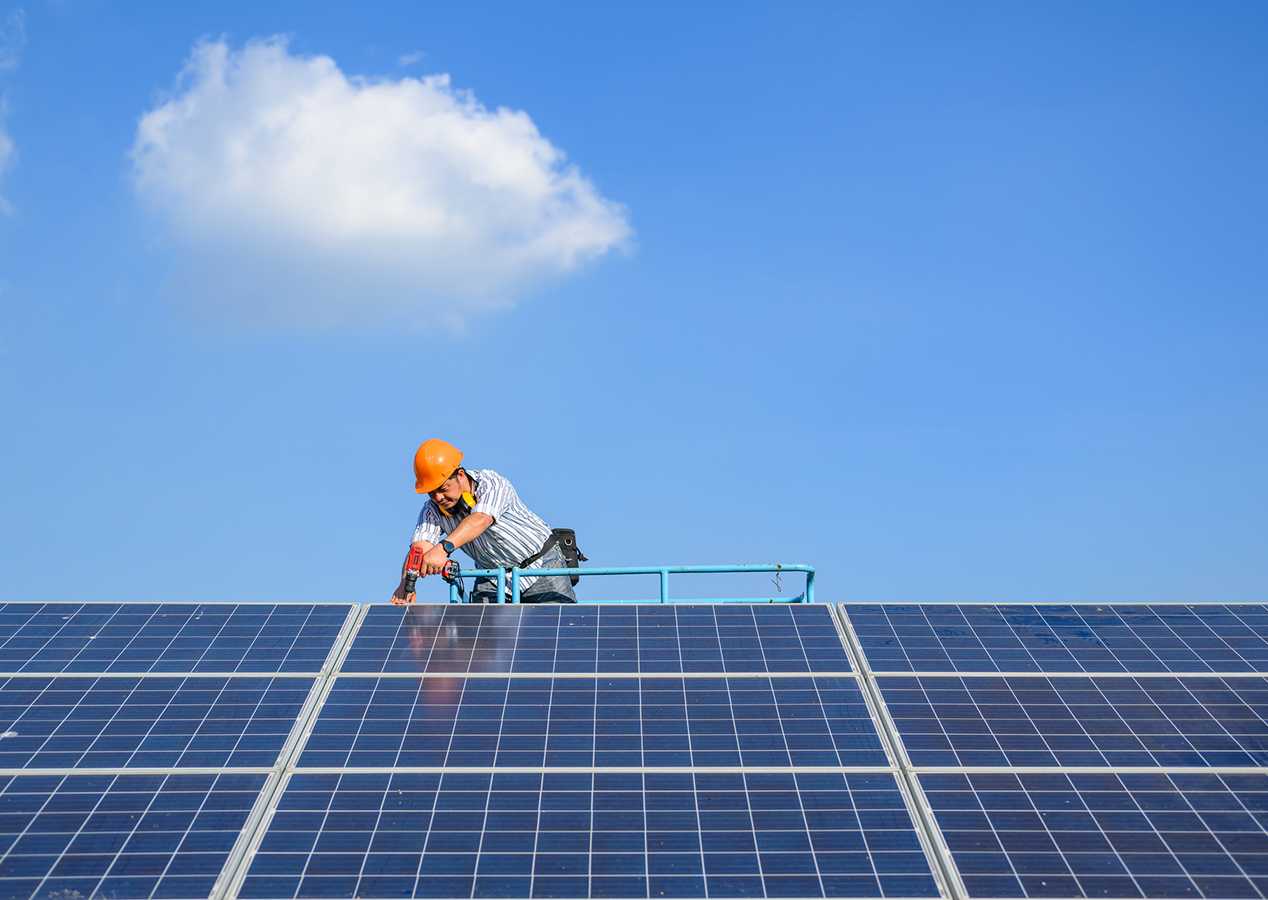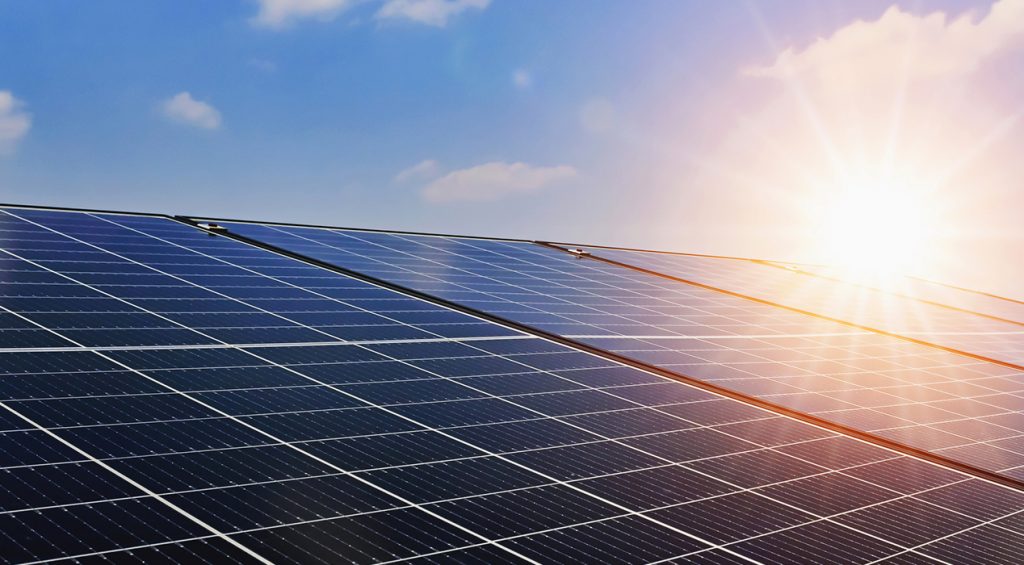Top 6 benefits of solar energy for commercial buildings

Solar Panels Should Be Included in the Design and Construction Stages of a Project
Solar panels have been used on residential buildings for many years, but it’s only recently that they’re becoming more common in commercial construction.
Solar energy is a cost-effective, dependable, eco-friendly way to power a business. It can power lighting, heating, air conditioning and water heating in commercial buildings. The panels can be installed on rooftops, parking lots and side yards.
In this article we discuss how solar panels work and the benefits of using solar energy in commercial buildings.
Use of Solar Energy Is Growing
Electricity costs in the U.S. are increasing, making it more expensive for businesses to operate and more challenging to plan ahead. Meanwhile, solar panel prices have dropped significantly in recent years as the technology and production processes have improved.
Since 2010, solar energy has experienced an average annual growth rate of 33%, according to a recent report by the Solar Energy Industries Association (SEIA). Due to rapidly declining costs, attractive tax credits and increasing demand across the private and public sector for clean electricity, there are now more than 130.9 gigawatts (GW) of solar capacity installed nationwide, enough to power 23 million homes.
In 2021, 46% of all new electric capacity added to the grid came from solar energy, the largest such share in history. Solar’s increasing competitiveness against other technologies has allowed it to quickly increase its share of total U.S. electrical generation, from just 0.1% in 2010 to more than 4% today, according to SEIA. At the same time, the cost to install solar systems has dropped by more than 60% over the last decade.
Read also: 20 Eco-friendly & sustainable building materials for greener construction
How Solar Energy Works
Sunlight is captured and converted into usable energy through different methods, some more efficient than others. Today, solar panels can convert 20% of the sunlight they capture into solar energy, making it a more viable source of power for commercial buildings.
A solar panel, also known as a solar module, consists of silicon cell layers, a glass casing unit, a metal frame and wiring to transfer electric current from silicon. Silicon has conductive properties that absorb and convert sunlight into usable electrical power. The sunlight causes the silicon cell electrons to set in motion, creating an electric current.

This photovoltaic effect, first discovered in 1839, comprises three steps:
- The photovoltaic solar cell absorbs solar radiation.
- When the silicon interacts with the sun rays, the electrons start to move and create a flow of direct electric current (DC).
- The wires feed this DC electricity into the solar inverter and convert it to alternating power (AC).
One of the challenges of using solar energy is how to store more of it to produce more power from it.
How Solar Energy Is Stored
There are several ways to store solar energy:
Battery Storage
When solar energy is fed into an electrochemical battery, the chemical reaction on the battery components keeps the solar energy. In a reverse reaction, the current exits from the battery storage for consumption.
Thermal Storage
Thermal storage uses mediums such as molten salt or water to retain and absorb the heat from the sun. The heated mediums are then stored in an insulated tank until the stored energy is needed for consumption.
Mechanical Storage
Mechanical storage converts the surplus electric power to mechanical power, then converts it back into electricity for later consumption. There are three primary types of mechanical energy storage systems:
Flywheel
This method uses surplus electricity to spin a flywheel, generating electricity during peak demand times.
Pumped-Storage Hydropower
Water is pumped to a reservoir using surplus energy from solar panels and sent upstream of the turbine generators. Then water is allowed to flow through the turbines to generate electricity.
Compressed Air
This system stores compressed air in large vessels such as tanks or natural formations (e.g., caves), then releases the air to generate electricity.
Benefits of Solar Energy for Commercial Buildings

1. Saves Money, Cuts Operational Costs
Electricity is one of the biggest ongoing expenses that commercial buildings have. Solar panels significantly reduce energy costs. While the initial investment can be high, overtime the cost of installing solar panels is recouped by the money saved on electricity bills.
2. Increases Property Value
Energy efficiency is tremendously popular these days. Installing solar panels can increase the value of commercial buildings and help them sell faster.
3. Gives Access to Tax Breaks
There are two tax federal credits available for businesses, nonprofits and local and tribal governments that purchase solar energy systems:
- The investment tax credit (ITC) reduces the federal income tax liability for a percentage of the cost of a solar system that is installed during the tax year.
- The production tax credit (PTC) is a per kilowatt-hour (kWh) tax credit for electricity generated by solar and other qualifying technologies for the first 10 years of a system’s operation. It reduces the federal income tax liability and is adjusted annually for inflation.
Solar systems that are placed in service in 2022 or later and begin construction before 2033 are eligible for a 30% ITC or a 2.6 ¢/kWh PTC if they meet labor requirements issued by the Treasury Department or are under 1 megawatt (MW) in size.
Generally, project owners cannot claim both the ITC and the PTC for the same property, although they could claim different credits for co-located systems, like solar and storage.
In addition to these tax credits, the Tax Cut and Jobs Act of 2017 offers the option of a 100% bonus depreciation on solar systems. Furthermore, some states and utility companies offer additional tax credits or rebates for commercial solar systems.
4. It’s Good for the Environment–and Your Brand
Solar energy is a renewable resource that does not produce greenhouse emissions; therefore, using solar energy helps the environment by reducing reliance on fossil fuels.
Consumer demand for environmentally friendly products and services has increased in recent years. By installing solar panels, a brand shows that it cares about the environment and is making an effort to reduce its carbon footprint.
5. It Protects Against Power Outages
Buildings that rely entirely on electric grids are vulnerable to power outages that occur during bad weather or electrical system malfunctions. Solar panels installed with battery systems allow commercial buildings to continue to function during power outages.
Read also: Life sciences construction: A rapidly changing landscape
6. Low Maintenance Costs
Solar panels require very little maintenance throughout their lifespan–a wash every once in a while, depending on where you live and how much debris accumulates on the panels. They have no moving parts, so they’re not likely to break down. Made of tempered glass and non-corrosive aluminum frames, solar panels can withstand rain, wind, hail and snow. The photovoltaic cells are designed to last 25 years or more.
Final Word
The advantages of using solar panels to power commercial buildings are likely to multiply as solar energy technology continues to develop. Rather than being an afterthought, solar panels should be considered during the design and construction phase of commercial projects.
Sources: SEIA, U.S. Office of Energy Efficiency and Renewable Energy, U.S. Department of Energy’s Better Buildings, Energy Star, Greenlancer, RevoluSun, Build Magazine, Solar Alliance, Alternative Energy Southeast, Solar Feeds, Verogy, Dataforma, Solar Smiths, S3DA, Industry Today, PB Roofing, Buildings Magazine, My Decorative.
